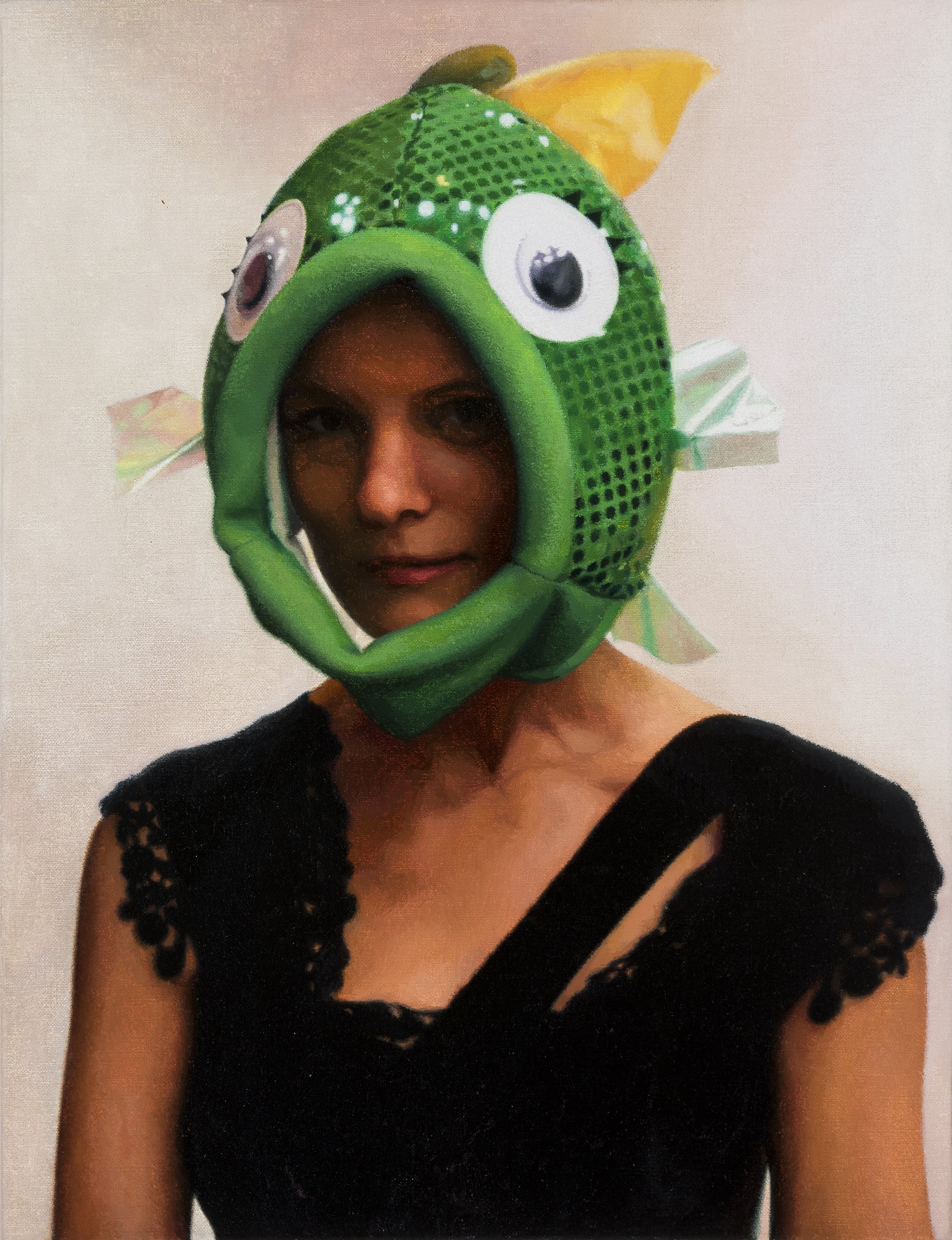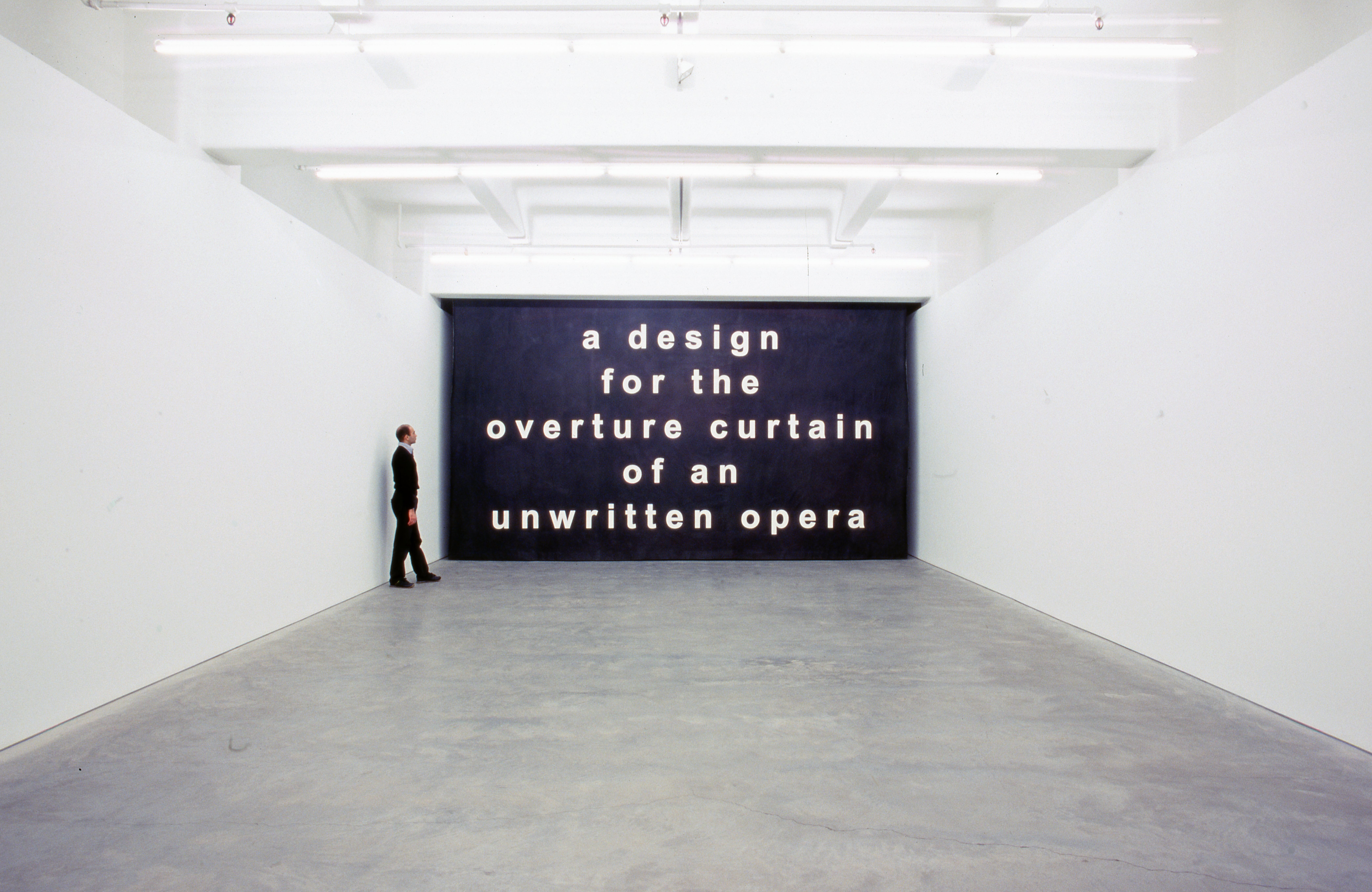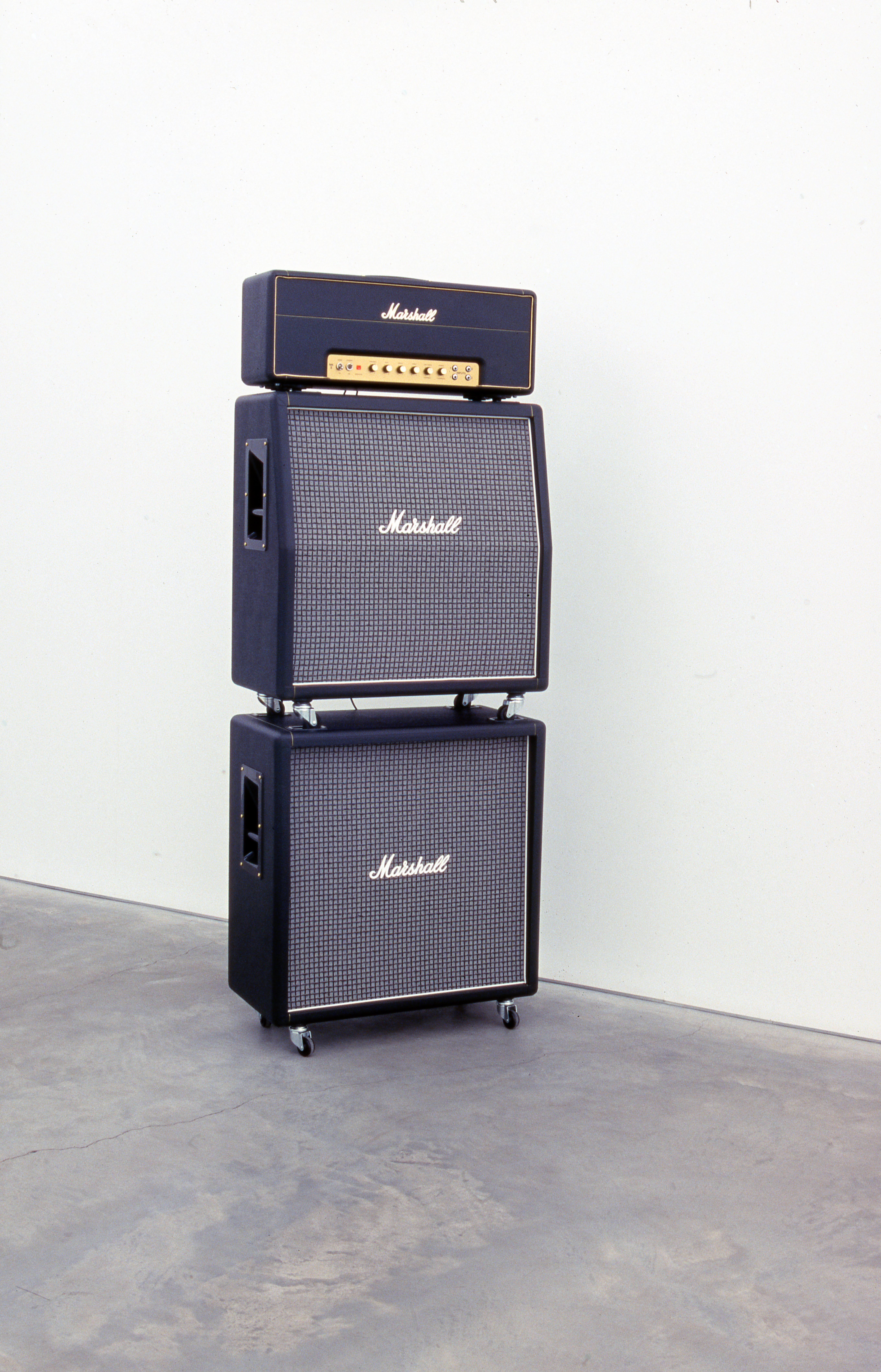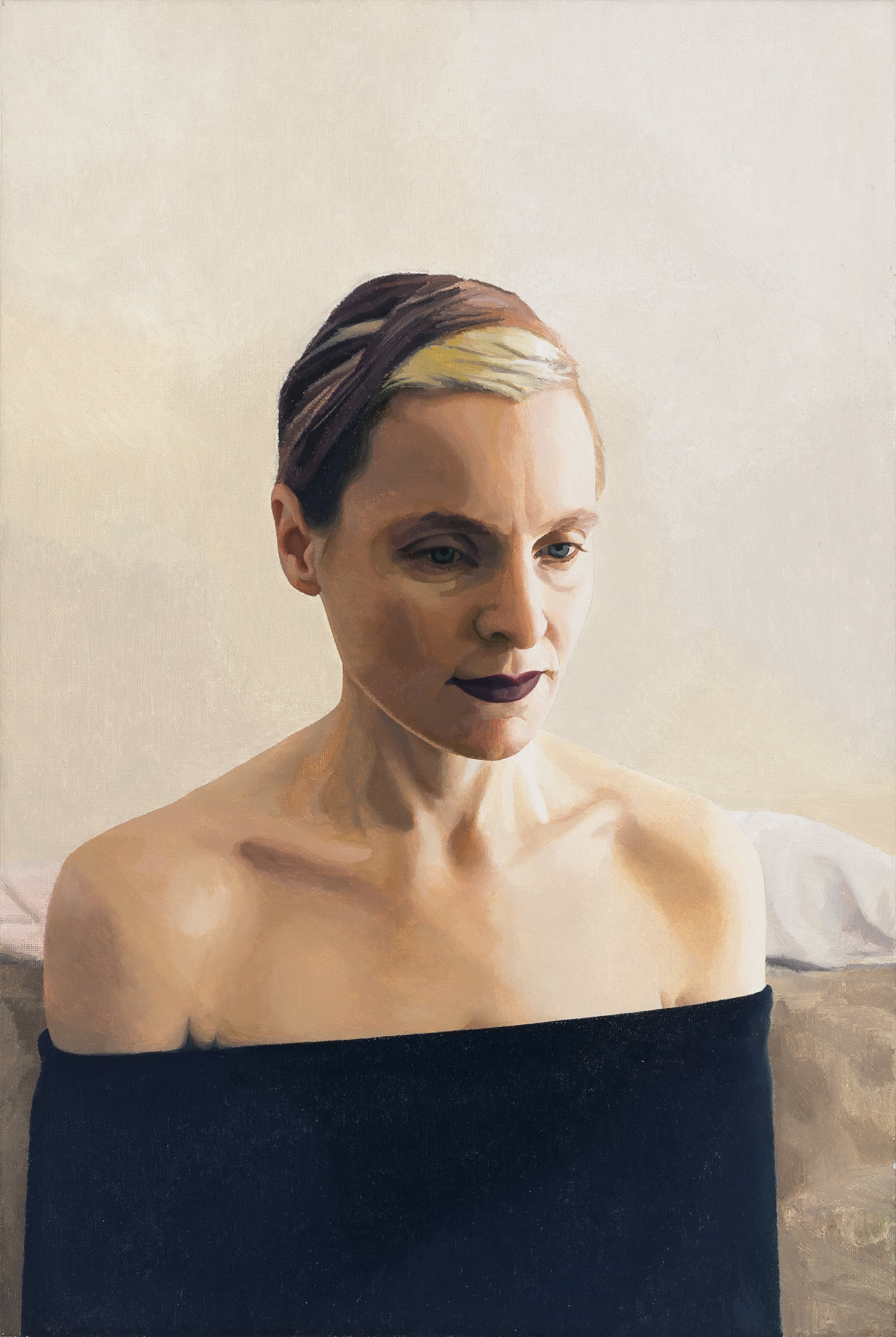



Artist: Mutlu Çerkez
Curators: Charlotte Day, Hannah Mathews and Helen Hughes
Mutlu Çerkez 1988 – 2065 is a considered survey of the late artist’s oeuvre that presents works dating from 1988 to 2005. For those unfamiliar with Çerkez’s work, the artist’s practice was defined by an overarching system of including a future date in his titles. This future date - for example, 21 March 2025 - would be the date when Çerkez would recreate the work. The year 2065 in the exhibition’s title refers to the date that Çerkez believed it would be possible to reproduce his works; he would have been one-hundred-and-one years old.
This survey of works, hung sparsely in MUMA’s immaculate galleries, encompasses several ‘phases’ of Çerkez’s mostly painting oriented practice, including photo realist works, posters, banners and some readymade sculpture. The modest number of pieces featured appears to have been deliberately selected to give a true overview of the artist’s various styles throughout some sixteen years of professional practice. The hang itself is organised so that viewers first encounter Çerkez’s later works, from the early 2000s, in the museum’s largest gallery, before then viewing earlier works from the 1990s. Whether this was an intentional tactic to mimic the non-linear temporality at play in Çerkez’s work is unclear, but it is nonetheless remarkable to see Çerkez’s stylistic diversity together in one room.
At one end of the gallery are two works that belong to the artist’s Unwritten Opera series — a stack of Marshall amplifiers (Untitled: 14 July 2030, 1999) and a stage curtain (Untitled: 15 January 2028, 1999). Facing these works at the other end of the space are photorealist portraits: two of Çerkez and one of his former partner Sarah Lewis, from 2003 and 2004. More than simply demonstrating diversity, this array of styles packed into just a couple of years is symptomatic of Çerkez’s approach, whereby his works ‘share the Wagnerian ambition of the total artwork, for which the artist takes complete responsibility over every detail’, as described by Justin Clemens (via Michael Graf) in The Monthly (2006).1 Techniques revisited are emblematic of the artist’s desire to work cyclically, while the overarching future dating scheme works as his consistent leitmotif.
This control is part of the voiding of the artist that Çerkez applied in his practice, in favour of larger considerations of temporality and its role in the reception of art. Even in his self-portraits, of which there are five scattered throughout this exhibition, the personality of the artist has been evacuated. In Untitled: 18 April 2013 (2002) the artist sits at his easel, looking directly at the audience, as if to satirise the romantic image of the painter. The analysis of temporality over any other aspect was, as Francis Plagne writes in the exhibition catalogue, in reaction to the notion of artistic maturity, progression, late and early works and so on. ‘Destined to be repeated at a later date, all of Çerkez’s early works would become ‘mature works’, his work would not evolve, or at least the gradient of its evolution would be flat.’2 Plagne cites a certain self-reference, a hermeticism, that cuts his work off from the outside world. Indeed, this ‘cutting off’ was not an apolitical gesture. It was, in fact, the opposite, attacking those critics and systems that would have liked to have focused upon the ‘progression’ of his practice.
Perhaps the most ‘hermetic’ series in the exhibition are three works from Cerkez’s 1988 series of photographic print canvases, Untitled 18096 (3 April 2014), Untitled 18150 (27 May 2014) and Untitled 18185 (1 July 2014). Exhibited in a small gallery accessible only via MUMA’s foyer, and sealed off with a sliding door, the works in this space demand contemplation. To make these 1988 works, Çerkez filmed a still life he had drawn on his mother’s tablecloth, a still of which he subsequently transferred to canvas using pressure-sensitive plastic. Significantly, the camera used to film the scene was future dated so that the date seen at the bottom of the screen was the date of intended recreation. As such, with each iteration of the image — from camera to print to canvas — the future date is consistent and, therefore, frozen, while the works’ creation is based in discrete processes that highlight the passage of time.
In the same gallery, the monumental Untitled 36891 (17 September 2065) (1990) extends above eye level along two walls of the space. The work is comprised of 112 14.5 x 11.5 cm panels - each of which has a date painted on it - from Çerkez’s birth year, 1964, through to 1975. Beneath the panels is a small, loosely painted canvas of a potato plant signed with the artist’s mother’s name, Egemen Çerkez, which he adopted that year after relinquishing his father’s name, Hassan. This gallery encapsulates the strange nexus between postmodern removal of emotion and absolute sentiment that exists in Çerkez’s work. Presented alongside the aforementioned video canvases and two canvases from 1990 that represent a kind of molecular constellation (Untitled 13145 (12 September 2000), Untitled 13202 (8 November 2000)), these pieces suggest a meditation on time and mortality, constantly shifting between the linear temporality of the calendars and the representation of modular and interchangeable elements on canvas.
This exhibition was developed with an un-official extended curatorium that included Çerkez’s family as well as artist friends Stephen Bram, Marco Fusinato, Michael Graf and Rose Nolan who advised curators Charlotte Day, Hannah Mathews and Helen Hughes. In addition, a protracted list of Melbourne artists and art workers who knew Çerkez, including Damiano Bertoli and Max Delany, are featured in the all-encompassing catalogue. Certainly, the decision to include an array of voices was the curators’ best chance for representing the late artist truthfully. However, this strategy also demonstrates just how ingrained Çerkez was in the Melbourne art scene of the 1990’s and early 2000’s, a scene that, more or less, stemmed from the efforts of Anna Schwartz who showed Çerkez when Anna Schwartz Gallery was still known as City Gallery. The exhibition represents the 1990s Melbourne arts community with accuracy and care, not dissimilar to the 2013 book of texts edited by this exhibition’s co-curator Helen Hughes (alongside Nicholas Croggon) about the critic and curator Paul Taylor, also published by MUMA.3
For the under-initiated, Mutlu Çerkez 1988 – 2065 offers a new encounter with Cerkez’s work as well as an understanding of the networks that were manifest in the 1990s Melbourne art scene in which the artist was enmeshed. These networks are also demonstrated in the artworks themselves. The series Poster design variations for artists’ publications (2001) consists of large black and white paper works that mimic a band’s set list, but that actually list the works of artists Rose Nolan, Marco Fusinato and Stephen Bram, all of whom advised during the development of this exhibition. Exhibited alongside a poster that Çerkez created for himself, the works index the networks and friendships at play during Çerkez’s artistic lifetime. The curators have taken pains to represent this ‘history’ as element of a broad practice, rather than overlaying it with sentiment. The survey’s focus is on the ‘whole picture’ of Çerkez’s Gesamtkunstwerk, and his overarching future dating system temporal interrogation. The result is a survey of a greatly underrepresented artist’s tight oeuvre, as well as the cultural society that he belonged to.
Amelia Winata is a writer who has contributed to Art Monthly, Art Guide, Gallery Magazine, Dissect, Memo Review and others.
[^1]:Justin Clemens, ‘Dating Longing’, The Monthly, February 2006, URL: https://www.themonthly.com.au/art-justin-clemens-dating-longing-work-mutlu-cerkez-174
[^2]:Francis Plagne, ‘Mutlu Çerkez: Variations on Nothing,’ Mutlu Cerkez 1988-2065 [exh. cat.], Charlotte Day, Helen Hughes and Hannah Mathews [curators], Monash University Museum of Art, 10 Feb-14 April 2018, p. 18.
[^3]:Helen Hughes and Nicholas Croggon [eds.], Impressario: Paul Taylor, The Melbourne Years, 1981-1984, Melbourne: Surpllus and Monash University Museum of Art, 2013.
